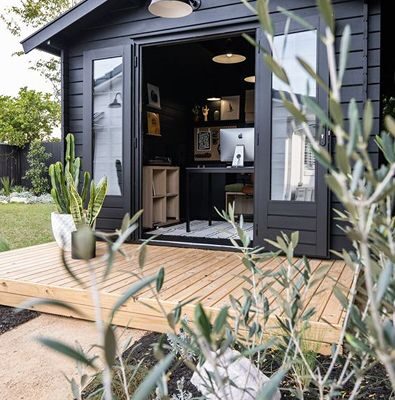20 Flowers and Their Flowering Periods
Discover the famous blooming periods of your favorite flowers, plants, and shrubs, and use the information to create a year-round colorful garden. Perennials are a great addition to any garden as they reliably bloom around the same time every year. Unlike annuals that flower for an entire season and then die off, perennials have shorter blooming periods but return every year. By strategically planting a variety of perennials that bloom at different times throughout the growing season, you can have a garden that stays vibrant and colorful from early spring to late fall. Whether you prefer early bloomers, mid-season favorites, or late bloomers, there are a wide variety of perennials to choose from to ensure your garden looks full and beautiful throughout the year. With a little planning and some careful selection, you can enjoy the benefits of a beautiful perennial garden that requires less maintenance and provides a stunning display of color year after year.
Thankfully, there are numerous types of perennials with varying bloom times, ensuring that your favorite flowers can thrive in your garden for a significant portion of the year. To promote healthy growth for each plant, add approximately an inch of compost to the soil during the early spring and fall seasons. This will provide the plants with necessary nutrients to aid in their development. Mulch can also be added, which benefits the plants in several ways. A two- to three-inch layer of mulch will help to keep the soil and roots cool, resulting in more blooms. Additionally, mulch helps to retain moisture in the soil, which is essential for the plants’ survival during hot and dry periods.
In order to prevent perennials from becoming stressed, it’s important to keep the soil moist, and mulching can help achieve this. When you spread a layer of mulch around your plants, it helps to retain moisture in the soil and prevents it from drying out too quickly. This is particularly important during hot and dry periods. A stressed plant is more vulnerable to diseases and pests, and its growth and bloom may be stunted. When applying mulch, make sure to leave a space of at least one inch between the mulch and the crown of the plant. This area, where the stems join the root or any part of the plant that’s above ground, should not be covered with mulch as it can lead to root rot, a fungal disease that affects the roots and can ultimately kill the plant. By properly applying mulch, you can help your perennials stay healthy and thrive in your garden.

1. Hellebore
Blooming time: Early Spring
Helleborus orientalis, commonly known as green hellebore, is a stunning early bloomer that makes a great addition to any garden. This perennial plant is known for its saucer-shaped flowers that come in a range of colors from white to deep purple, with greenish-yellow hues dominating the color palette. Green hellebore is a hardy plant that can withstand the cold temperatures of winter and even thrive in them. It starts to appear in December and continues to bloom until March, making it one of the earliest blooming perennials in the garden. It prefers partial shade and works best in zones four to nine, but can also grow well in other zones with proper care. Green hellebore is an excellent choice for gardeners looking to add color and interest to their garden during the winter months, and its resilience and adaptability make it a low-maintenance addition to any landscape. With its attractive foliage and charming blooms, green hellebore is sure to be a favorite of both novice and experienced gardeners alike.
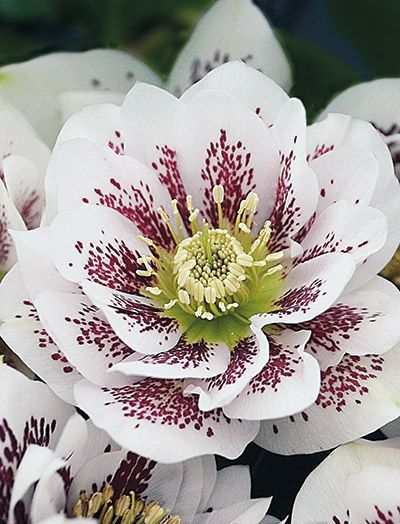
2. Peony
Blooming time: Late Spring to Early Summer
The showy flower referred to here is none other than the peony, one of the most popular garden flowers. Peonies are known for their large, fluffy blooms that come in a wide range of colors, including white, pink, red, and even yellow. These stunning flowers bloom in May and June and are often used in wedding bouquets, floral arrangements, and other decorative displays. One of the great things about peonies is that they are relatively easy to grow, thriving in full sun to partial shade. If you live in zones three to eight, you’ll have lots of success planting these beauties in your garden. To get the most out of your peonies, be sure to plant them in a location that gets plenty of sunlight and has well-draining soil. Peonies also benefit from a layer of mulch around their base, which helps to retain moisture and prevent weeds. With their stunning beauty and easy-to-care-for nature, it’s no wonder that peonies are such a beloved garden flower.

3. Lilac
Blooming time: Late Spring to Early Summer
The lilac is a stunning spring-blooming shrub that adds charm and beauty to any garden. It’s known for its delicate and fragrant light purple flowers that bloom in May and early June. While the flowers are the main attraction, the plant also boasts lush green foliage that provides an attractive backdrop to the blooms. Lilacs prefer full sun to partial shade and do best in moist, well-drained soil. They are hardy plants and can be grown in zones three to nine, making them an excellent choice for many areas. The lilac’s essential oil is highly prized by herbalists for its therapeutic properties, which are said to help with minor skin ailments. In addition to their beauty and scent, lilacs also attract pollinators like butterflies and bees to the garden, making them a valuable addition for those looking to support local wildlife. With proper care and maintenance, the lilac can produce an abundance of sweet-smelling flowers each year, delighting gardeners and visitors alike.
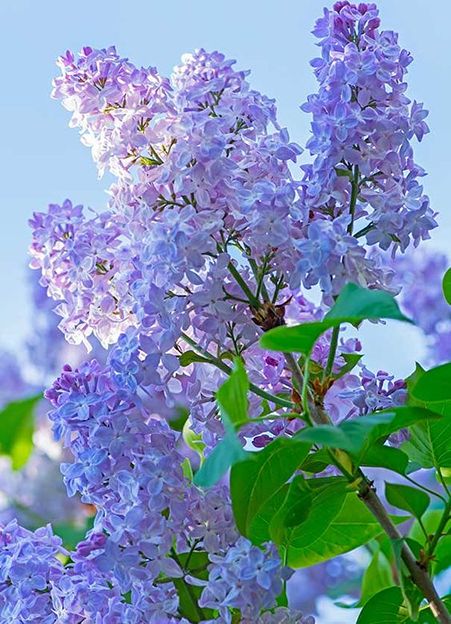
4. Salvia
Blooming time: Late Spring to Early Summer
Salvia, also known as wood sage, is a beautiful flowering plant that blooms in a wide range of colors, from deep blue to vibrant pink, purple, and red. This plant is ideal for those who want to add a pop of color to their garden without investing too much time and effort into maintenance. Salvia requires full sun exposure, at least six to eight hours a day, and is considered low maintenance. It can thrive in a variety of soil types, but well-drained soil is preferred. Salvia is also drought-tolerant, making it a great option for those who live in hot and dry climates. If you’re in zones four through eight, you can enjoy the beautiful blooms of salvia in your garden each year. The plant attracts bees, butterflies, and hummingbirds, making it a great addition to any pollinator garden. The leaves of salvia are also aromatic and can be used to add flavor to a variety of dishes, making it a versatile plant for both the garden and the kitchen.

5. Forsythia
Blooming time: Late Spring to Early Summer
Forsythia is a beautiful and vibrant spring-blooming shrub that is often used as a border flower. Its bright yellow flowers make it a standout in any garden and it typically blooms from March to April. This hardy plant is easy to grow and requires full sun and part shade, making it a versatile addition to any landscape. However, it’s important to note that forsythia only thrives in zones five to eight, so it’s not suitable for all regions. If you live in an area that meets the growing requirements, forsythia can be a magnificent addition to your garden. It’s also a low-maintenance plant that can tolerate a range of soil types and conditions, making it an excellent choice for beginner gardeners or those who don’t have a lot of time to devote to gardening. If you’re looking for a beautiful, easy-to-grow plant that will add a pop of color to your garden in the early spring months, forsythia is definitely worth considering.

6. Scabiosa
Blooming time: Late Spring to Early Summer
Scabiosa, commonly known as pincushion flowers, is a beautiful addition to any garden. With their unique, pincushion-like blooms, scabiosa is a low-maintenance flower that is perfect for those who want to add some color to their garden without having to put in a lot of effort. These flowers bloom from April to October and are best suited for zones five through nine. Not only are scabiosa flowers attractive to humans, but they also attract butterflies, making them a great choice for those looking to bring more pollinators to their garden. Scabiosa requires full sun to partial shade and well-draining soil, so make sure to plant it in an appropriate location. With a little care and attention, scabiosa will provide a beautiful and long-lasting addition to any garden.
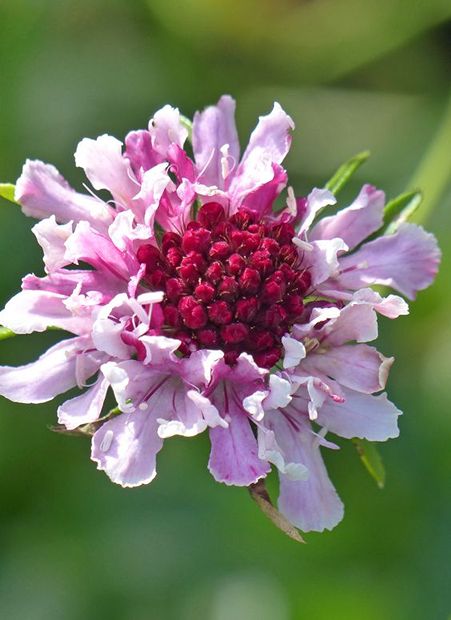
7. Astilbe
Blooming time: Late Spring to Early Summer
Astilbe, also known as false spirea, is a shade-loving perennial that can add a burst of color to any garden. Its feathery plumes come in a variety of colors, including pink, red, and white, and it blooms from May to June in zones four through nine. Astilbe prefers moist soil, so it’s important to keep it well-watered during dry spells. This plant is also a great choice for attracting pollinators, such as butterflies and bees, to your garden. With its attractive foliage and colorful blooms, astilbe is a popular choice for borders and woodland gardens. It can grow up to three feet tall, making it a great choice for filling in empty spaces in your garden. Overall, astilbe is a versatile and easy-to-grow plant that can add a pop of color to your shady areas.
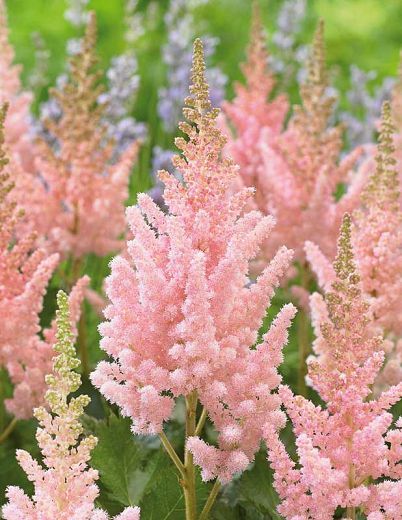
8. Azalea
Blooming time: Late Spring to Early Summer
Azaleas are a stunning flowering shrub that belongs to the rhododendron family. One key difference between the two is that azaleas produce one blossom per stem, while rhododendrons have multiple blooms on each stem. These gorgeous shrubs are popular in gardens for their bright and bold blooms, which come in a wide range of colors such as pink, white, red, and purple. Azaleas prefer a slightly acidic soil and partial shade, making them a great choice for areas that don’t get full sunlight. They are low-maintenance and easy to grow, making them an ideal choice for beginner gardeners. Depending on the climate and growing conditions, azaleas typically bloom from May to July and can thrive in zones four through nine. They make a beautiful addition to any garden or landscape, and with the right care and attention, can produce stunning blooms year after year.
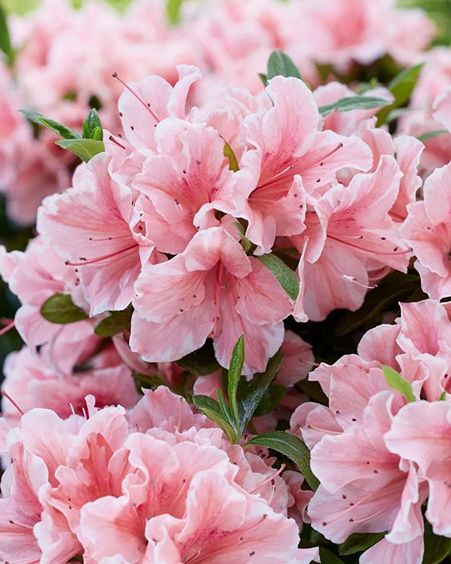
9. Poppy
Blooming time: Summer
The red poppy is a well-known and beloved flower that blooms in the summertime, typically in June and lasting until July or August. While red is the most popular color for this charming and perky perennial, there are also stunning varieties in shades of orange and red. The red poppy is a low-maintenance plant that can thrive in a wide range of zones, from three to ten. It’s easy to grow and can add a delightful burst of color to any garden. This flower is also a symbol of remembrance and is often used to honor military veterans who have sacrificed their lives for their country. Whether you plant them in memory of loved ones or simply to add a pop of color to your garden, red poppies are a classic and timeless choice for any gardener.

10. Dahlia
Blooming time: Summer
Blanket flower, also known as gaillardia, is a showy and vibrant summer bloomer that is a part of the sunflower family. This cheerful perennial produces bright, daisy-like flowers in shades of red, yellow, and orange, with a distinctive central cone that’s rich in nectar, making it attractive to bees and butterflies. Blooming from July to September, the blanket flower thrives in full sun exposure and is a low-maintenance plant that grows best in zones seven through ten. The blanket flower is an ideal choice for those looking to add a pop of color to their garden, and its long-lasting blooms make it a great cut flower for bouquets and arrangements.
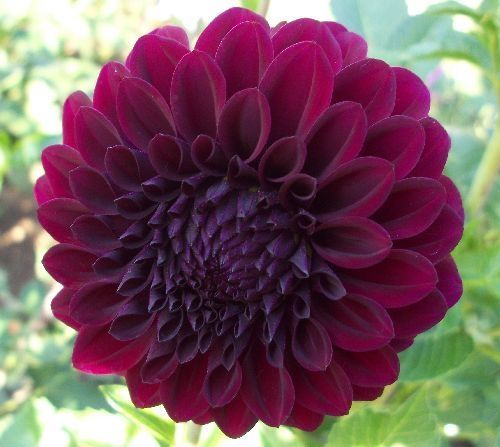
11. Daylilies
Blooming time: Summer
Daylilies, also known as Hemerocallis, are known for their bright and cheerful blooms that last only one day, but with many blooms produced over the course of several weeks. They are an accommodating perennial that can grow in full sun to partial shade, making them a versatile addition to any garden. With a wide range of colors and sizes available, daylilies bloom from May to August in zones three through ten. The extremely popular Stella de Oro variety produces abundant golden-yellow blooms from early summer through late summer, making it a great choice for those looking for a long-lasting and low-maintenance flower. Once established, daylilies are quite hardy and require little maintenance, making them a favorite among gardeners. With proper care and the right growing conditions, daylilies can provide years of colorful blooms to brighten up any landscape.
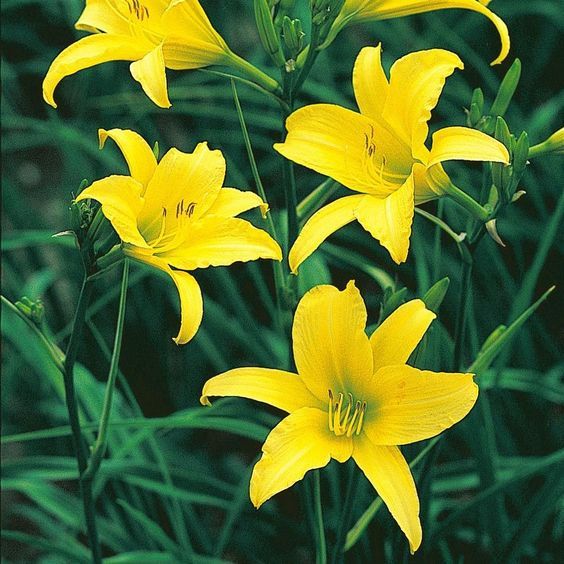
12. Black-Eyed Susan
Blooming time: Summer
The flower in question is the black-eyed Susan, a popular and beloved member of the daisy family. This hardy perennial is native to North America and can tolerate a wide range of soil types and growing conditions, from full sun to partial shade. It’s a great choice for gardeners looking to add some bright color to their landscapes in the late summer months, as the plant produces an abundance of showy flowers with bright yellow petals and dark brown, cone-shaped centers that are attractive to bees, butterflies, and other pollinators. Black-eyed Susans are also well-suited to naturalistic or wildflower gardens, and they can be used as cut flowers in arrangements. With proper care and maintenance, these easy-to-grow perennials can be enjoyed year after year in zones three through seven.
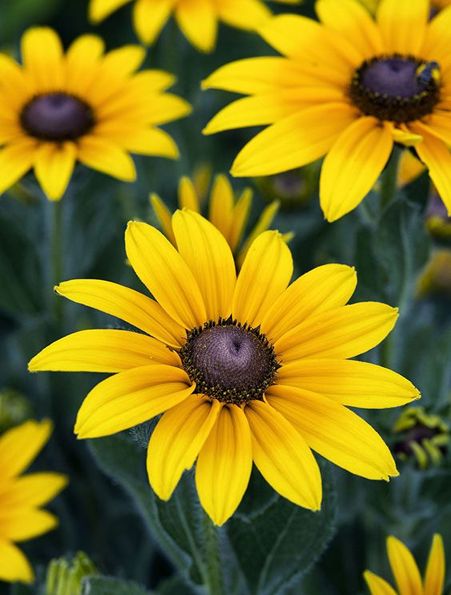
13. Daisy
Blooming time: Summer
Shasta daisy is a well-known perennial species that produces beautiful white petals with bright yellow centers. This flowering plant blooms from June to September and is loved by many gardeners for its easy maintenance and versatility. Apart from the classic white variety, Shasta daisy also comes in eye-catching hues like yellow and orange, making it a perfect addition to any garden looking to add a pop of color. Shasta daisy thrives in zones five through nine and prefers full sun exposure, but it can also tolerate partial shade. With its long-lasting blooms, low-maintenance needs, and vibrant colors, the Shasta daisy is a great choice for any gardener looking to add some brightness to their outdoor space.

14. Japanese Anemone
Blooming time: Summer
Anemones, which are part of the ranunculus family, are a great addition to any garden as they bloom from late summer until October. Similar to tulips, they close up at night and open up again in the morning, adding a fun element to any landscape. These beauties prefer to grow in zones six through nine and require a bit of space to spread out. Anemones come in a variety of colors, including white, pink, red, and purple, so they are sure to add a pop of color to any garden. With proper care, anemones can become a perennial in your garden, returning year after year to delight you with their vibrant blooms.
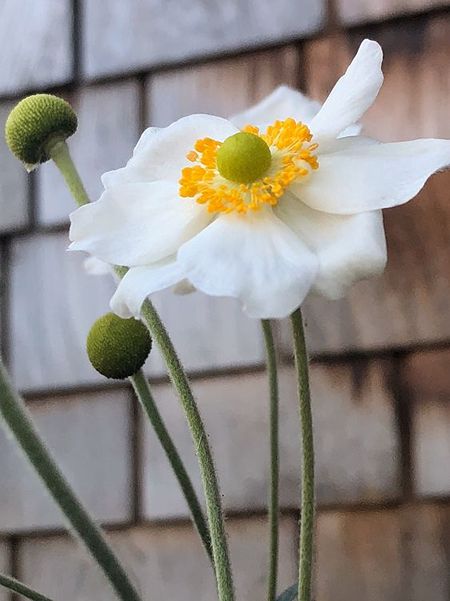
15. Hydrangea
Blooming time: Summer
Hydrangeas are highly prized for their stunning colors and unique shape. These flowering shrubs are available in shades of blue, pink, green, white, and purple, with the blooms forming a beautiful rounded shape. Hydrangeas have a blooming season that runs from May through September, and they are at their showiest in zones four through nine. In addition to their visual appeal, hydrangeas are also highly versatile and can be used in a variety of ways in the garden. Some people choose to plant them as stand-alone specimens, while others use them to create colorful borders or hedges. Regardless of how you choose to use them, hydrangeas are relatively easy to care for and can add a splash of color and beauty to any outdoor space. They prefer moist, well-drained soil and partial shade to full sun, making them a great choice for a variety of garden settings. With their stunning colors and beautiful shape, hydrangeas are a popular choice for gardeners looking to add a touch of elegance and sophistication to their outdoor spaces.

16. Aster
Blooming time: Summer
Asters are a popular perennial flower that adds a splash of color to any garden. These beautiful flowers have daisy-like petals and come in a wide range of colors, including white, pink, purple, blue, and red. They’re also a favorite of butterflies, which makes them a great addition to any pollinator garden. Asters bloom from late summer to early fall, typically from August to October, and require full sun to thrive. They do best in zones three through eight and can be used as cut flowers to brighten up indoor spaces. These low-maintenance plants are easy to care for and can provide years of enjoyment with their beautiful blooms.

17. Pulsatilla
Blooming time: Summer
Pulsatilla, also known as Pasqueflower or Windflower, is a delicate and attractive spring-blooming perennial. Its bell-shaped flowers come in shades of lavender, pink, white, and red, and are held atop fuzzy stems and leaves. Pulsatilla is highly valued for its ornamental appeal as well as its medicinal properties. The plant has a long history of use in traditional medicine to treat a variety of ailments, from respiratory and digestive problems to menstrual symptoms. Pulsatilla prefers full sun to partial shade and well-draining soil, and can be grown in zones three to eight. With proper care and maintenance, this beautiful and beneficial plant can thrive in gardens and landscapes for years to come.
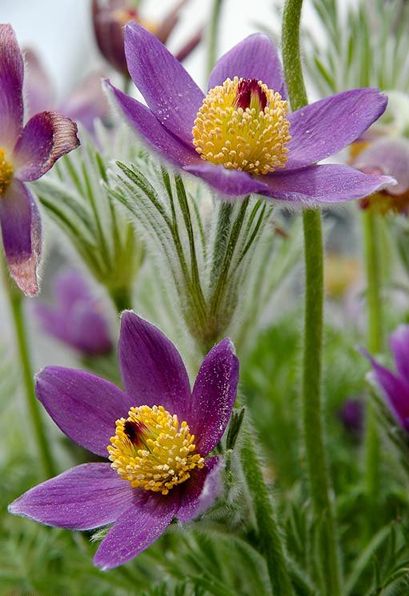
18. Rose of Sharon
Blooming time: Summer
Although roses are the quintessential flower of romance, this flowering shrub known as hibiscus is a close contender when it comes to producing stunning blooms. With its large and colorful flowers, the hibiscus plant can add a tropical feel to any garden. Unlike roses, hibiscus is known for its huge flowers with numerous stamens, and it’s a favorite of hummingbirds and butterflies. Blooming from July to October in zones five through eight, this beautiful plant requires full sun to partial shade and regular watering. The hibiscus plant is a low maintenance choice for those looking to add some exotic color to their garden during the late summer months.
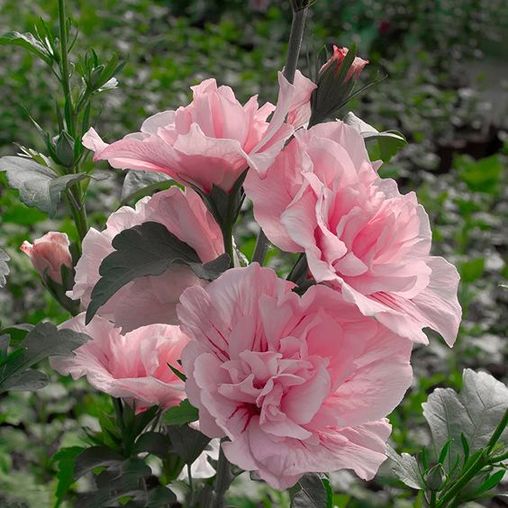
19. Chrysanthemum
Blooming time: Fall to Frost
Chrysanthemums, also known as mums, are the quintessential fall flower that delivers a lot of blossoms with their fluffy head of petals. They are available in a wide range of colors and bloom from September until the first frost. These colorful flowers are commonly seen everywhere in zones five through nine during autumn, making them the perfect addition to fall gardens, floral arrangements, and seasonal decor. They require full sun and well-draining soil to grow and do well in most soil types. With their vibrant colors, unique shapes, and long-lasting blooms, chrysanthemums have become a popular choice for gardens and cut flowers alike. They are also easy to care for, making them a perfect choice for beginner gardeners.

20. Viola
Blooming time: Fall to Frost
Violas, also known as pansies, are a beautiful and hardy flower that blooms in both the fall and spring seasons. With their stunning and vibrant purple petals, they are a favorite among gardeners, but they also come in a range of other colors, including yellow and white. Violas are known for their hard-working nature and require full sun to flourish; making them an excellent choice for those living in zones four through eight. They are also quite resilient, able to withstand frost and cold temperatures, making them a great option for gardeners in cooler climates. Violas are versatile, too, as they can be planted in garden beds or in containers, and are a popular choice for adding color to flower arrangements. If you’re looking for a low-maintenance, long-lasting flower that will brighten up your garden in both the fall and spring, violas are an excellent choice.


